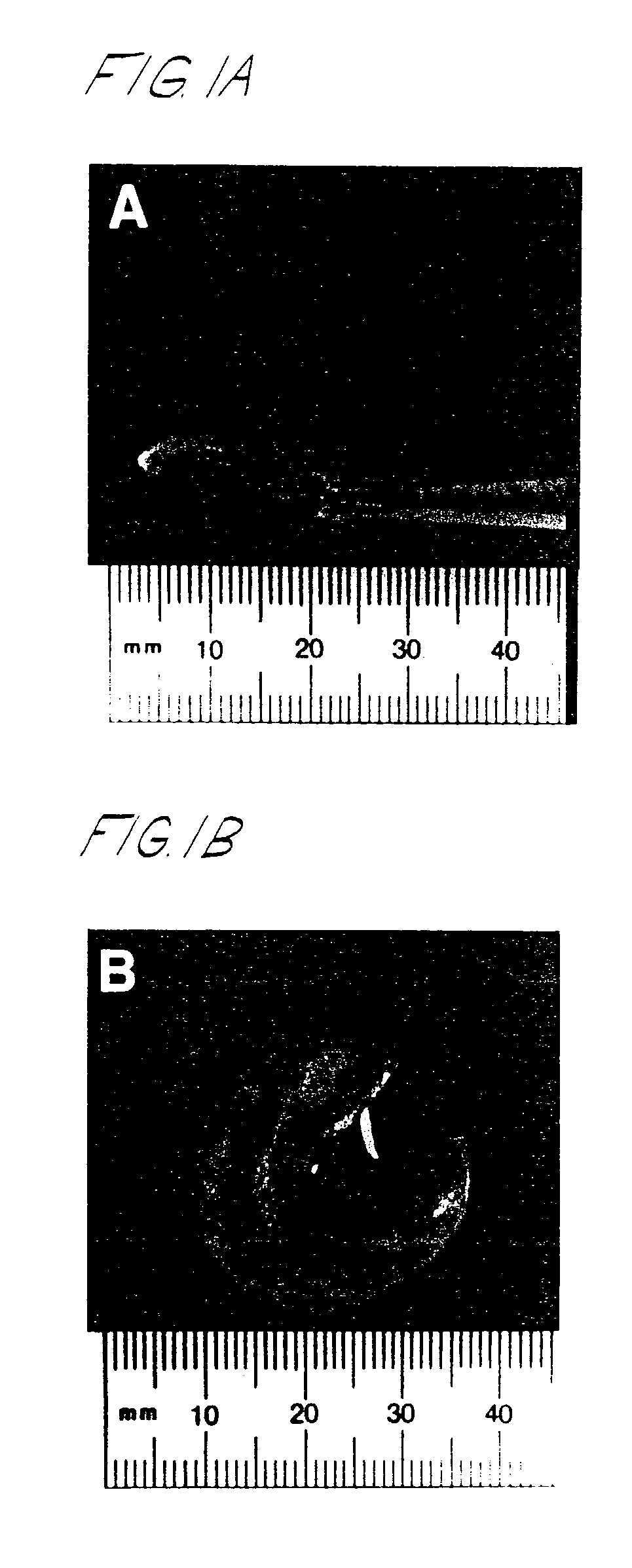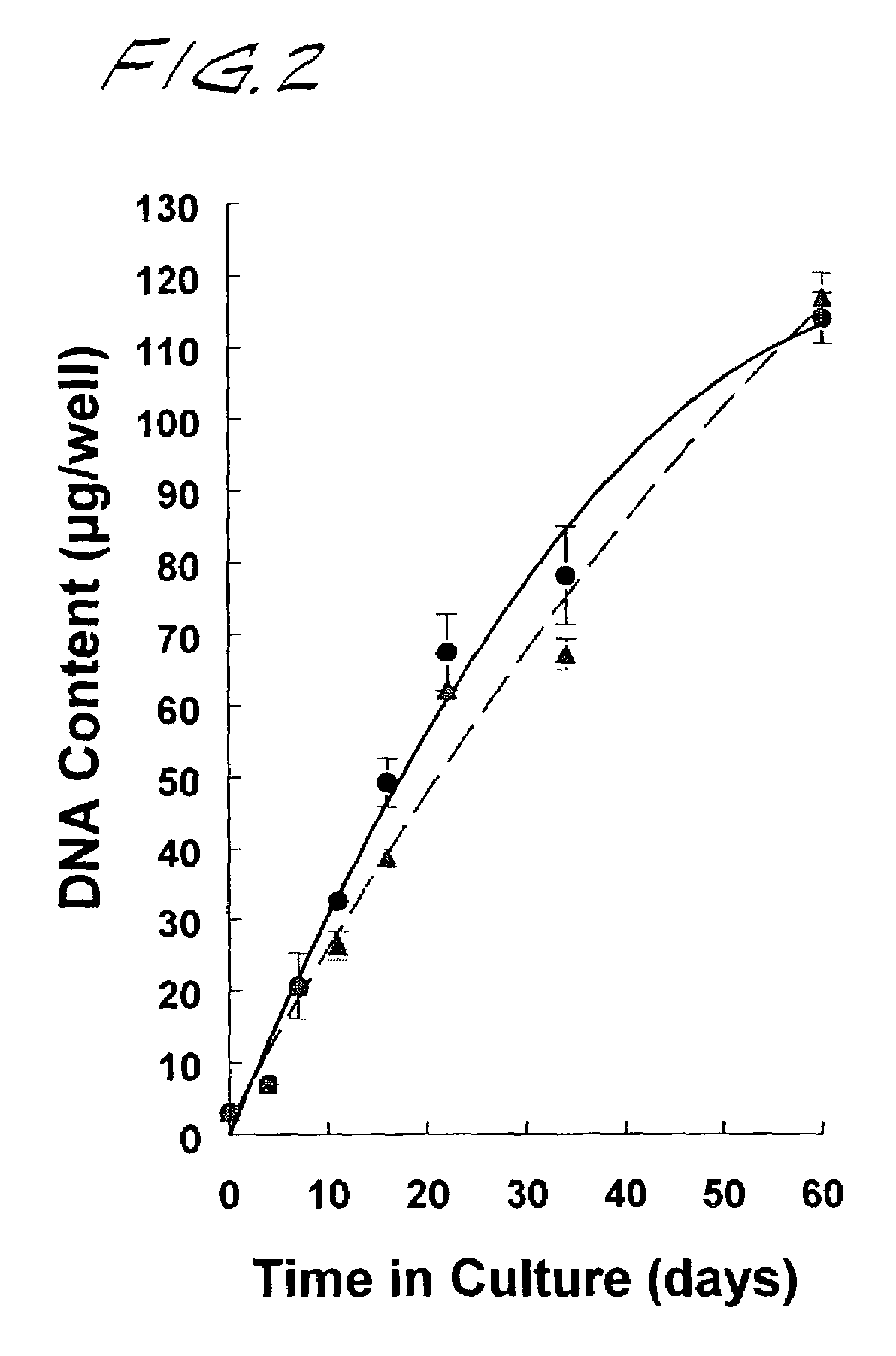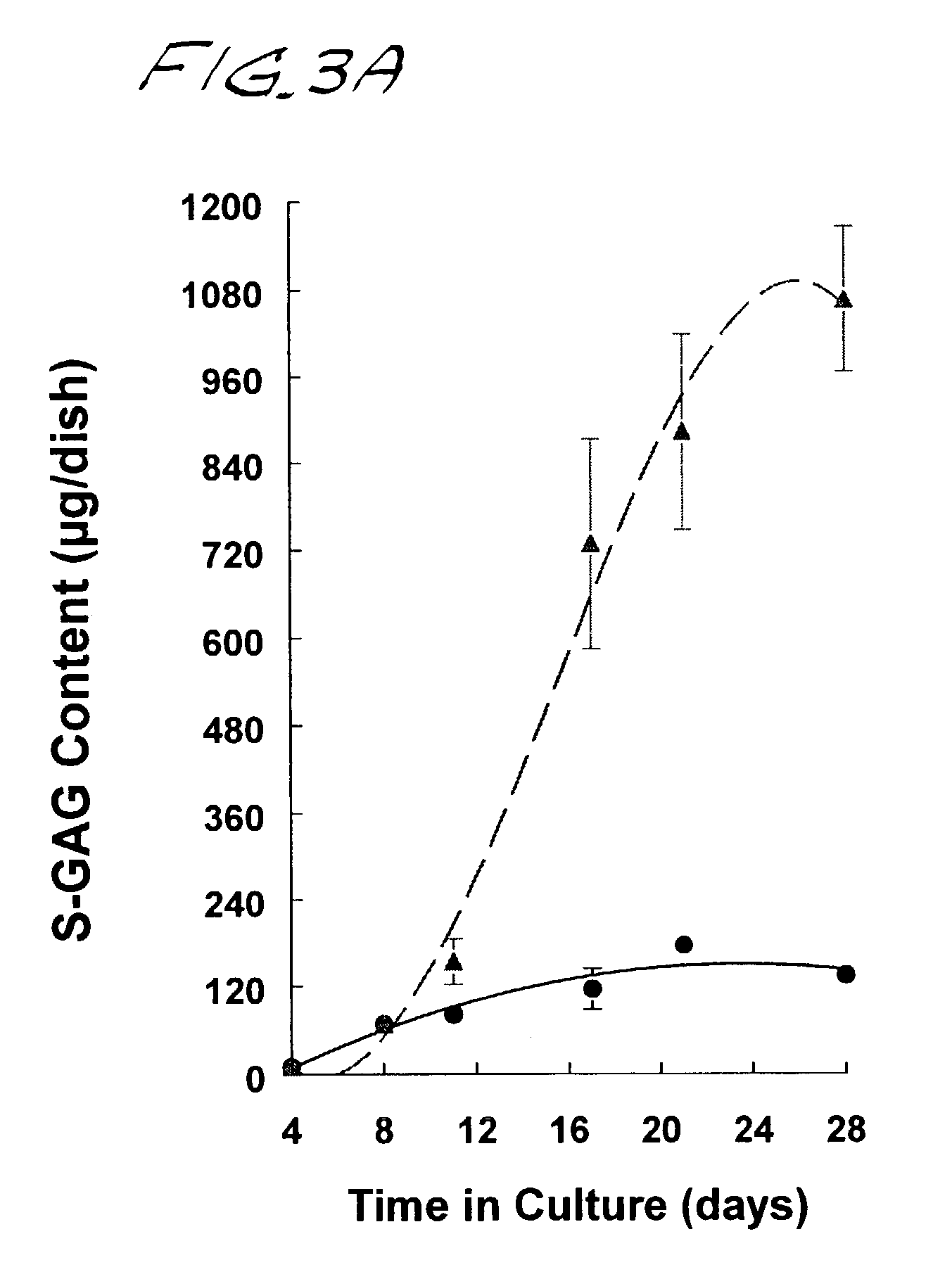Cartilage composites and methods of use
a technology of cartilage and composites, applied in the field of new neocartilage compositions, can solve the problems of chondrocyte dedifferentiation and formation of fibrocartilage, inability to grow human articular cartilage using traditional cell culture methods such as tissue-culture plastic surfaces and serum-containing growth media, and failure to achieve in vitro neocartilage production
- Summary
- Abstract
- Description
- Claims
- Application Information
AI Technical Summary
Problems solved by technology
Method used
Image
Examples
example 1
Preparation and Culture of Immature and Adult Human Chondrocytes
[0128]Chondrocytes were isolated within 8–24 hours of death from the upper region of the tibial plateau and femoral condyle of intact fetal bones (18–21 weeks gestation, Advanced Bioscience Resources, Inc., Alameda, Calif.). Hyaline cartilage from infant knees (≦8 months) was removed from the metaphysis of both the proximal tibia and distal femur using rib cutters and transferred to sterile serum-free DMEM, containing antibiotics (2×) and 1% bovine serum albumin, for chondrocyte isolation as described below. Additional samples of more mature cartilage (12–58 years) were processed similarly. All of these cartilage tissues were provided by Mid-America Transplant Association (St. Louis, Mo.). All tissues were transported on wet ice prior to use.
[0129]Skin from fetal limbs was removed and stored at −20° C. for preparation of collagen standards (i.e., types I and III) via limited pepsinization. Skeletal muscle and other conn...
example 2
Biochemical Assessment of Neocartilage Formation
[0137]Neocartilage formation was assessed by calorimetric analyses of sulfated glycosaminoglycan (S-GAG) and hydroxyproline (OH-proline), general measures of proteoglycan and collagen synthesis, respectively. Neocartilage disks were lyophilized and digested 18 hrs at 56° C. in 500 μl of 0.1 M sodium acetate buffer (pH 5.6), containing 5 mM Na4EDTA, 5 mM L-cysteine, and 125 μg / ml papain. The digests were cooled to room temperature for determination of S-GAG, OH-proline, and DNA content.
[0138]Sulfated-GAG and the OH-proline content of papain digested material were determined at the indicated times via microplate colorimetric procedures adapted from Farndale et al., Biochim Biophys Acta 883: 173–177 (1986), and Stegemann and Stalder, Clin Chim Acta 18: 267–273 (1967), respectively. Chondroitin-6-sulfate (Calbiochem) and cis-4-hydroxy-L-proline (Sigma) were used as standard.
[0139]DNA content was estimated by fluorometric analysis using a C...
example 3
Model Systems for Studying Articular Cartilage Disease and Articular Cartilage Response to Natural and Synthetic Compounds
[0148]Neocartilage cultures were established in 24 or 48 well plastic dishes (Corning) as described above (Example 1) and grown to day 30. The hyaline cartilage matrix was then stimulated to undergo autolytic degradation following 30 day activation with increasing concentrations of a variety of cytokine and / or inflammatory agents, including IL-1, Il-6, IL-17, TNF-α, LPS, and phorbol ester. Culture media were collected every 48 hours and subsequently changed by the addition of fresh media±inflammatory stimuli.
[0149]Cultures were terminated and the biochemical composition of the neocartilage matrix that remained was analyzed as described previously. Parallel samples were processed for light and transmission electron microscopy for histological evaluation of extracellular matrix components.
[0150]Conditioned media were thawed and identification of chondrocyte-derived...
PUM
| Property | Measurement | Unit |
|---|---|---|
| thick | aaaaa | aaaaa |
| diameter | aaaaa | aaaaa |
| thickness | aaaaa | aaaaa |
Abstract
Description
Claims
Application Information
 Login to View More
Login to View More - R&D
- Intellectual Property
- Life Sciences
- Materials
- Tech Scout
- Unparalleled Data Quality
- Higher Quality Content
- 60% Fewer Hallucinations
Browse by: Latest US Patents, China's latest patents, Technical Efficacy Thesaurus, Application Domain, Technology Topic, Popular Technical Reports.
© 2025 PatSnap. All rights reserved.Legal|Privacy policy|Modern Slavery Act Transparency Statement|Sitemap|About US| Contact US: help@patsnap.com



